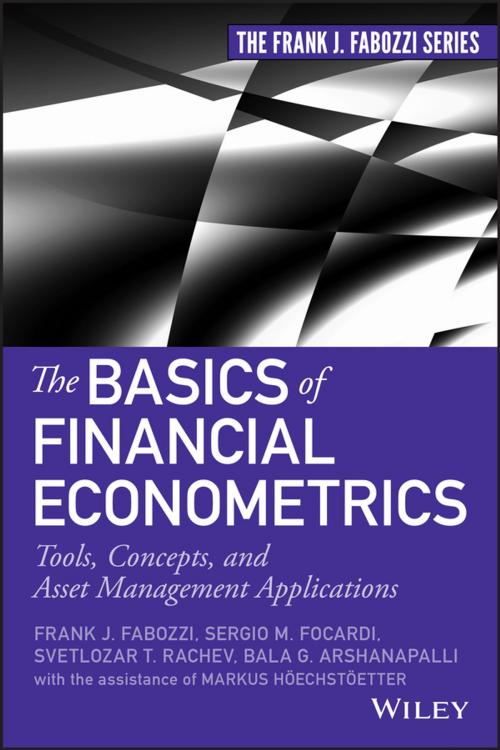The Basics of Financial Econometrics
Tools, Concepts, and Asset Management Applications
Business & Finance, Finance & Investing, Finance| Author: | Frank J. Fabozzi, Sergio M. Focardi, Svetlozar T. Rachev, Bala G. Arshanapalli | ISBN: | 9781118727232 |
| Publisher: | Wiley | Publication: | March 4, 2014 |
| Imprint: | Wiley | Language: | English |
| Author: | Frank J. Fabozzi, Sergio M. Focardi, Svetlozar T. Rachev, Bala G. Arshanapalli |
| ISBN: | 9781118727232 |
| Publisher: | Wiley |
| Publication: | March 4, 2014 |
| Imprint: | Wiley |
| Language: | English |
An accessible guide to the growing field of financial econometrics
As finance and financial products have become more complex, financial econometrics has emerged as a fast-growing field and necessary foundation for anyone involved in quantitative finance. The techniques of financial econometrics facilitate the development and management of new financial instruments by providing models for pricing and risk assessment. In short, financial econometrics is an indispensable component to modern finance.
The Basics of Financial Econometrics covers the commonly used techniques in the field without using unnecessary mathematical/statistical analysis. It focuses on foundational ideas and how they are applied. Topics covered include: regression models, factor analysis, volatility estimations, and time series techniques.
- Covers the basics of financial econometrics—an important topic in quantitative finance
- Contains several chapters on topics typically not covered even in basic books on econometrics such as model selection, model risk, and mitigating model risk
Geared towards both practitioners and finance students who need to understand this dynamic discipline, but may not have advanced mathematical training, this book is a valuable resource on a topic of growing importance.
An accessible guide to the growing field of financial econometrics
As finance and financial products have become more complex, financial econometrics has emerged as a fast-growing field and necessary foundation for anyone involved in quantitative finance. The techniques of financial econometrics facilitate the development and management of new financial instruments by providing models for pricing and risk assessment. In short, financial econometrics is an indispensable component to modern finance.
The Basics of Financial Econometrics covers the commonly used techniques in the field without using unnecessary mathematical/statistical analysis. It focuses on foundational ideas and how they are applied. Topics covered include: regression models, factor analysis, volatility estimations, and time series techniques.
- Covers the basics of financial econometrics—an important topic in quantitative finance
- Contains several chapters on topics typically not covered even in basic books on econometrics such as model selection, model risk, and mitigating model risk
Geared towards both practitioners and finance students who need to understand this dynamic discipline, but may not have advanced mathematical training, this book is a valuable resource on a topic of growing importance.















